Booker T. Washington, the Tuskegee Institute and New York City
The story of one of the late 19th-early 20th century most influential African American leaders. Love him or hate him, his voice was an important part of American history.
(Booker T. Washington and President Theodore Roosevelt at Tuskegee, 1905)
Booker Taliaferro Washington was the most famous black man in America between 1890 and 1915. He was the voice of the Negro in the United States during that time; the leader of a group of Americans who found themselves free, after centuries of slavery, but generally without power, a voice, or equal opportunity to achieve the American dream at the turn of the 20th century.
He became a controversial figure towards the end of his life, and throughout the rest of the century, but love him, hate him, or know nothing about him; Washington was one of the most influential men in the history of this country. His travels often took him to Brooklyn and New York City, and that part of his story, as well as a look at life for African Americans in Brooklyn at that time, is today’s tale.
First some background: Booker T. Washington was born into slavery in 1856. He was the child of an enslaved mother named Jane, and a white plantation owner from another plantation in rural Virginia. After the Civil War, young Booker and his mother moved to West Virginia, where his mother married his stepfather, Washington Ferguson. Booker took his step-father’s name as his own surname, out of respect for his new parent.
The family was poor, but Booker was able to get some schooling while working in the coal mines and salt furnaces of West Virginia. He walked 500 miles from his home, a state away, to southern Virginia in order to attend Hampton Normal and Agricultural Institute, the famous school established for freedmen, today called Hampton University. He couldn’t afford tuition but worked as a janitor at the school in order to attend.
The white founder and president of Hampton, General Samuel C. Armstrong, led a Negro regiment during the Civil War and was committed to African-American education. He found a like mind in young Booker T. Washington and became his friend and mentor. Washington graduated in 1875 and went back to West Virginia to teach in his old home town. He got married in 1881 to the former Fanny Smith and was then offered a teaching job back at Hampton. He accepted and was in the right place at the right time when the new Tuskegee school was founded.
(Bricklaying class at Hampton Institute, 1905 via Library of Congress)
In 1881, the Alabama legislature approved a $2000 expenditure to start a “colored school” at Tuskegee. It would be called the Tuskegee Normal and Industrial Institute, today Tuskegee University. They asked General Armstrong to recommend a white man to lead the school. He gave them the 25-year-old Booker T. Washington. The first classes were held in a church. Washington bought a nearby plantation, and over the course of the next few years, the students and faculty themselves built the school; making the bricks themselves, building the buildings, tending fields and growing crops. It was both a teaching situation and a necessity.
Washington would spend the rest of his life at Tuskegee. He immediately went on fund-raising tours, giving lectures on the merits of donating to the school. Both men and women attended Tuskegee, and both were expected to take not only academic courses, but vocational courses. They learned carpentry, masonry, farming, cooking and other craft and domestic skills. His was the last generation of African-Americans born into slavery, and Washington believed that the way to Negro equality in post-Reconstruction Southern America was through “industry, thrift, intelligence and property.”
(Alabama Hall at Tuskegee Institute, 1906. Photo: Library of Congress)
While life for African Americans in the North was hardly a bed of roses, black life in the South was so much worse. The Civil War may have freed the slaves, but not much else changed. Reconstruction was a false hope and after the Union Army and the Northerners left, life went back to what it had been before in terms of black/white relations. The vast majority of the black population was still working the land, now as sharecroppers instead of slaves and the social inequality remained. Blacks could not vote, had little or no political or social power, few opportunities for education or advancement, and Jim Crow segregation laws, and threats of “swift justice” by hate groups like the Ku Klux Klan were everywhere.
Black leaders in the South, as exemplified by Booker T. Washington, struggled with advancing the opportunities for true citizenship for the race, while placating the white establishment. It was a fine line to walk. In 1895, at the Cotton States and International Exhibition, in Atlanta, Washington gave his famous “Atlanta Compromise” speech, which made him a national figure and catapulted him into a leadership role in black America. In that speech, Washington encouraged white Southerners to welcome black workers, saying that the South was where the Negro could be given a chance, instead of in the North, where immigrant workers were overwhelming the marketplace.
He set forth the terms of the Compromise: black people would accept segregation and social inequality if the white establishment would do their part to provide education and due process under the law. He was not going to rile up the white Southern populace with demands that blacks run for office, vote, or become bank presidents and lawyers.
But he did want schools like Tuskegee to train better black farmers, domestics, craftsmen, cooks, seamstresses, shoemakers, mechanics, and other tradespeople. These occupations would provide the South with a trained and eager black workforce. Black workers would be willing to forego social and civic equality until changes could slowly be eased into the society, as whites realized how loyal and necessary their black workers were. Equality could be earned, but not now, and not by demanding it.
(Shoemaking class at Tuskegee, 1905. Photo: Library of Congress)
He praised the African American community for its loyalty to whites and their eager service, but warned that the South’s current oppression was straining that loyalty, and that black people looked to Southern whites to provide fair treatment. He stated that jobs and employment were more important than social rights, saying that “the opportunity to earn a dollar in a factory just now is worth infinitely more than the opportunity to spend a dollar in an opera house.” Washington felt that segregation was acceptable, if both black and white societies could work together like separate fingers in a hand.
Needless to say, this stance proved immensely popular with his audience, and resonated well with businessmen, politicians and white audiences across the South, and in the North, as well. A patient, long-suffering and eager workforce of black laborers who accepted their inferior social status and didn’t cause trouble or make waves was certainly worth a few segregated schools, and places like Tuskegee, which would train generations of skilled workers. The North and South were united in welcoming this idea and hailed Washington as the leader of his people. His career as a successful fundraiser, lecturer, and social commentator took off. He would spend most of the rest of his life crossing the country delivering this message. Brooklyn, as well as New York City, was very often on his lecture itinerary.
Washington had the support of many black educators, businessmen, and clergy; a base from which he formed a national coalition. He was important to black politics and had the support of many black communities across the country, as well as firm support by many wealthy liberal whites, especially here in the North. He would have access to some of the most important halls of power, including the White House. He was greatly supported by New York’s Republican Party, and was invited to the homes, clubs, and pulpits of the city’s liberal and business elite. This support made him a frequent speaker in Brooklyn, lecturing in many of her largest churches, lecture halls and clubs.
Starting in 1890, Booker T. Washington’s name started appearing in the Brooklyn Eagle. Brooklyn was very interested in solutions to its own relationship with its African American population. Although farming was still practiced in Flatbush and New Lots, most Brooklyn African Americans were not sharecroppers or farmers. Brooklyn’s black population had its own issues with inequality, poor educational prospects, poverty and lack of jobs or job advancement. The huge influx of immigrant labor also was problematical to black advancement, as racism proved more powerful than cultural xenophobia. Everyone was interested in what Dr. Washington had to say.
(The Washington home on the Tuskegee Campus. Photo: Library of Congress)
On March 15, 1892, Booker T. Washington gave a talk about the Tuskegee Normal and Industrial School to a group of South Brooklyn residents who were interested in advances in Negro education. He was one of several speakers at the Second Unitarian Church, on the corner of Congress and Clinton Streets, and he spoke long and eloquently about his school. The audience found the story of the founding of the school and the progress of its students to be fascinating.
The end of the 19th century was seeing a vast influx of European immigration, and northern blacks were feeling the economic pinch, as traditional “black jobs,” like domestic service, dock-working and manual labor jobs were going to people who literally just got off the boat. Tensions were rising. Many ethnic groups found themselves being compared to blacks, usually in the worst ways possible, and racism was becoming more and more prevalent in our cities. On top of that, Northern blacks were demanding better education and opportunities to work in white collar fields, and to attend white colleges, and rise as equals in American society.
Mr. Washington brought his message to cities like Brooklyn, asking for donations for Tuskegee and for privately funded schools for Negroes throughout the South. He raised a lot of money. In January of 1896, Washington found himself on the podium of the Alexander Hamilton Club in Brooklyn Heights with a cast of the day’s luminaries. He shared the stage with Civil War generals, wealthy businessmen like Chauncey Depew and Robert Roosevelt, plus Woodrow Wilson, the well-known professor at Princeton.
The Hamilton Club almost didn’t get Washington on their roster, as he was also scheduled to speak at a dinner at the Union League Club. He spoke at the Hamilton and ended up speaking at the Union League Club for Lincoln’s birthday, where he shared the stage and podium with some of Brooklyn’s movers and shakers. The two clubs had to rearrange their schedules so that both could get Booker T. at their events. That’s remarkable.
In October of that same year, Washington came back to Brooklyn to speak again at the Hamilton Club, and he spent a couple of days in Brooklyn, touring trade schools, meeting with civic leaders, both black and white, and doing the town. He was supposed to stay at the Hamilton Club, but instead accepted an offer from T. McCant Stewart, a prominent Negro lawyer, and former member of the Brooklyn Board of Education. These Brooklyn and New York City visits would continue well into the first decade and a half of the 20th century.
While he was being feted by prominent wealthy New York businessmen and receiving accolades from a great deal of the black community, not everyone was happy with Mr. Washington’s message of giving up much in order to achieve a little. The loudest critic was W.E.B. Dubois, the leader of the newly formed National Association for the Advancement of Colored People, the NAACP. This institution was founded by both blacks and whites in 1909, against the advice of Booker T. Washington, who saw the association and its demands as too much, too soon.
The NAACP advocated equal rights for African Americans, not later, but now. It demanded that black people everywhere in the country immediately gain full access to all the rights and privileges being enjoyed by white people, as guaranteed by the Constitution and Bill of Rights. DuBois and others vehemently disagreed with Washington’s Atlanta Compromise.
They pointed to the increased lynching and violence in the South and the lack of opportunity for blacks just about everywhere, as proof that America, especially the South, was not going to honor their side of the deal. DuBois argued that black people’s rights should not be on hold, as the passive receivers of hopeful future white largesse. The two men would never see eye to eye, and as two of the most prominent African-American men in the country, were at polar ends of the spectrum, and always would be.
(W.E.B. DuBois. Photo: National Portrait Gallery at the Smithsonian)
Booker T. Washington enjoyed a unique place in America’s Northern white society. He was respected, consulted, and treated as an equal by his wealthy and influential hosts. He was used to being recognized by much of the general population, if not by sight, then by name and reputation. In the North, he rarely experienced any discrimination. In 1911, he was an elegantly dressed handsome middle-aged man with what people of that age called a “fine carriage”. On March 19th, 1911, he was about to experience what it meant to be a black man in a white society on New York’s Upper West Side.
On the evening of that night, Washington went to the apartment house of an acquaintance, a Mr. D.C. Smith. As he walked past the building several times and looked for Smith’s name on the doorbells, he was seen by a Mrs. Albert Ulrich, a resident of the apartment building. She told her husband that a Negro was suspiciously checking the building out. Ulrich went out and verbally accosted Washington, demanding to know why he was in the neighborhood and in the building, and told him to get out. Washington ignored him and continued his search for Smith’s apartment.
This caused Ulrich to chase Washington down the street, along Central Park West. This happened right when many people were on their way to dinner and the theater, so there was a big crowd. The 55-year-old Washington, who was not in the greatest of health, fell several times in the altercation, during which time he was kicked and punched by strangers who only saw a black man being chased down the street by a white man. A crowd gathered around the men, and Washington was scraped up, bruised, bloody and covered in mud. The police came and both men were taken to the nearby precinct station.
Ulrich told the police that he had been chasing a suspicious black man who was in the hallway of his building, frightening his wife. He wanted him charged with illegal entry. At this point, Washington had not said a word. When questioned, he drew himself up, dusted himself off, and said, “This man is mistaken, I am Booker T. Washington.” The room stepped back. He showed identification, and explained why he had been in the building, saying that he had forgotten the exact address he was looking for, and was checking the names on the bells when Mrs. Ulrich had seen him. He went on to drop some prominent names as character references.
The lieutenant in charge wanted to then arrest and charge Ulrich for assault, but Washington advised against it, and wouldn’t press charges, even though the blood was still running down his face at the time. Other witnesses came forth to corroborate his story. A still shaken Washington presumably was released into the care of his friends, and the incident was over, except for the press coverage.
The New York Times, in the same story of the event, told of his life and accomplishments, noting that Booker T. Washington had received an honorary degree from Harvard in 1906, and had consulted with Presidents McKinley and Roosevelt. The general feeling that a black man in the “wrong place” could be assaulted without provocation was not addressed, or even mentioned. Washington would not be the last person to be accosted for walking while black in neighborhoods others thought they should not be in.
Four years later, Booker T. Washington died of congestive heart failure; he literally worked himself to death. He died at his desk, and is buried on the campus of his beloved Tuskegee Institute. His legacy is mixed, but there is no doubt that he was one of the most influential men of the 20th century. Through his efforts thousands of students who would not have received any kind of education, were more able to negotiate, albeit slowly, upwards in society. His personal story of dedication and perseverance is inspiring. In the later years of the 20th century, he was dismissed as an appeasing Uncle Tom by many activists and historians, but today, many historians and leaders are once again giving him credit where credit is due.
In Brooklyn and New York City, his speeches and presence raised the consciousness of wealthy New Yorkers, causing them to give to Tuskegee and Negro education, in general. Not all the funds went down South. Northern blacks supported the Republican Party until after World War I. But as the century progressed with little progress, Washington’s hope that white America would appreciate its black population and reward them with equality was a pipe dream. W.E.B DuBois and the NAACP would call for racial equality in full measure, with no compromise, and this call would guide race relations throughout the 20th century and beyond. In 2022, we’re still working on it.
(Tuskegee Institute’s famous 332d Fighter Group, the Red Tails, aka the Tuskegee Airmen, heroes during World War II. Photo: Military.com)
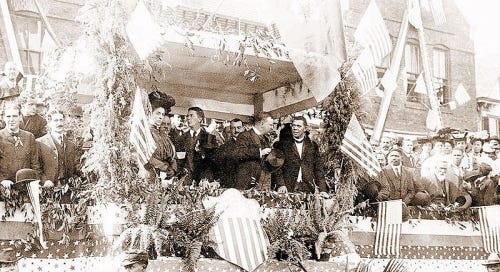



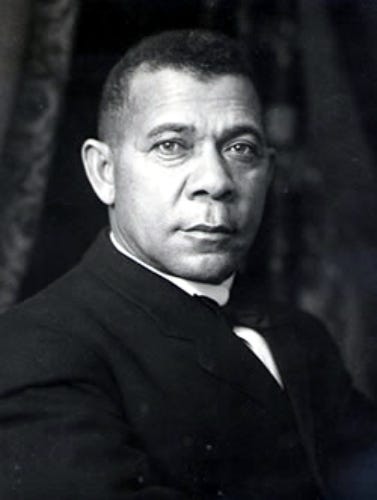

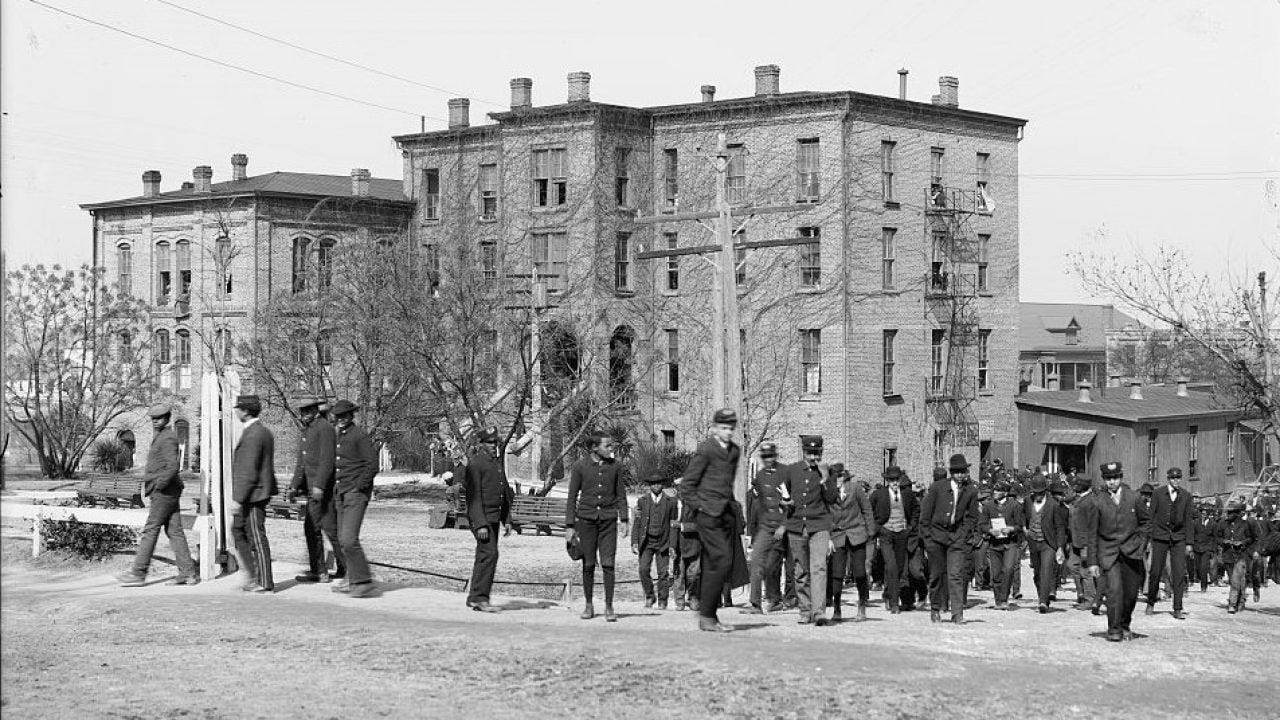
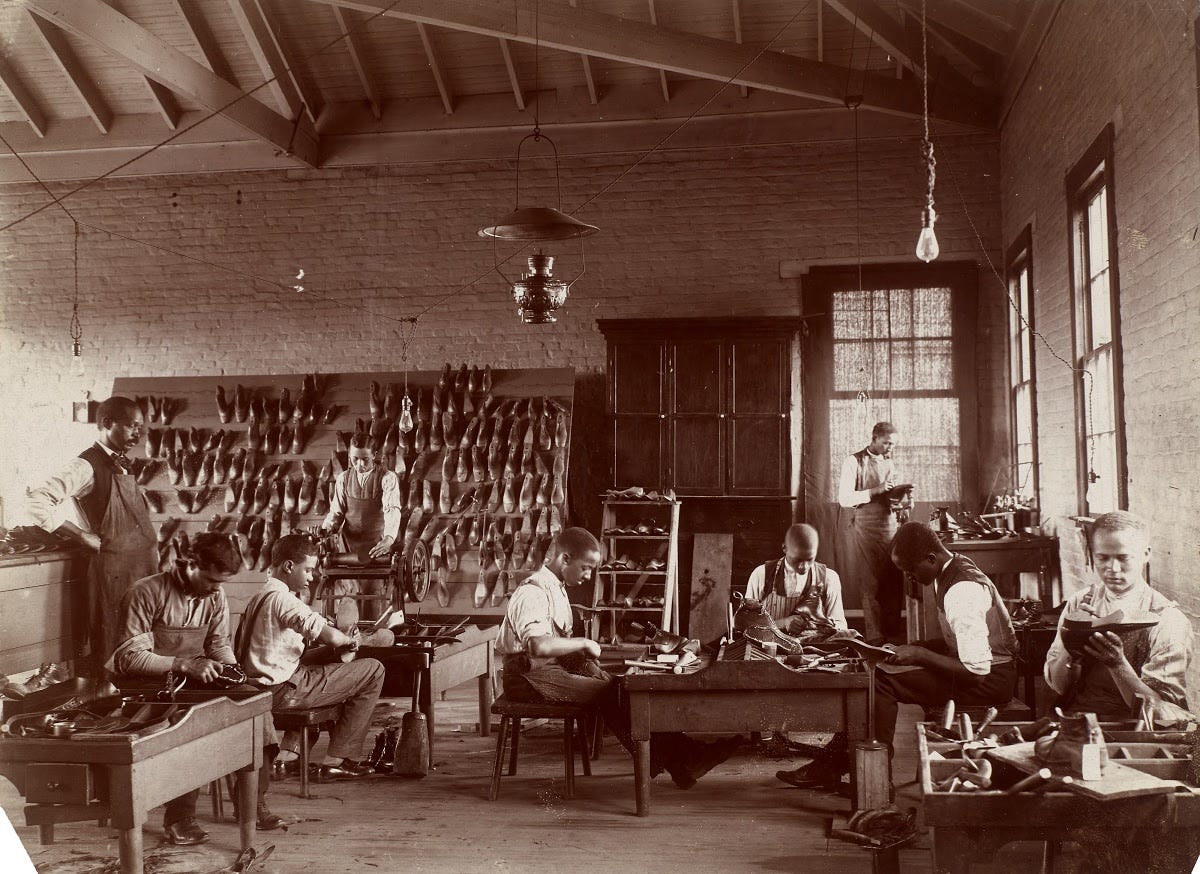

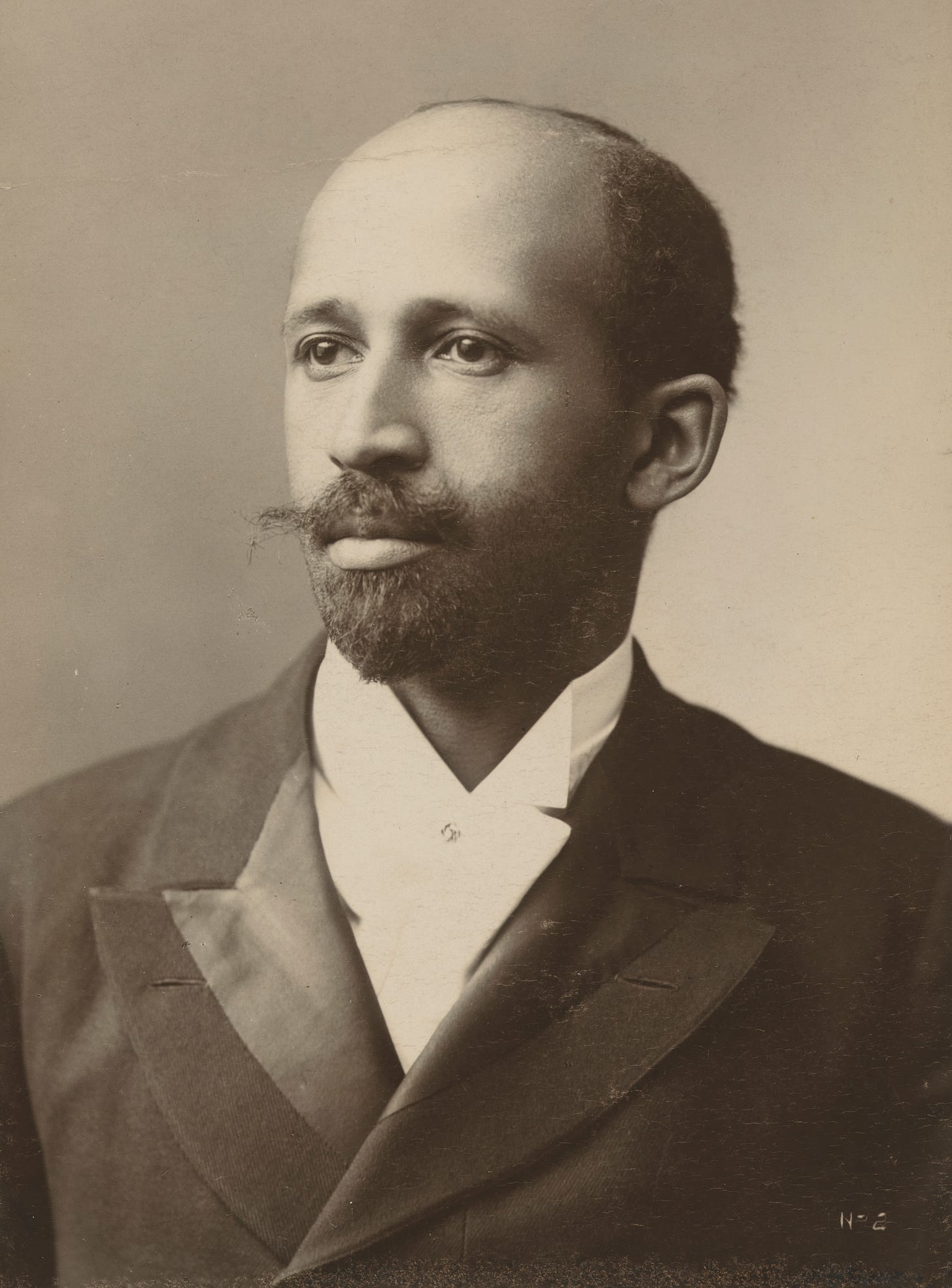
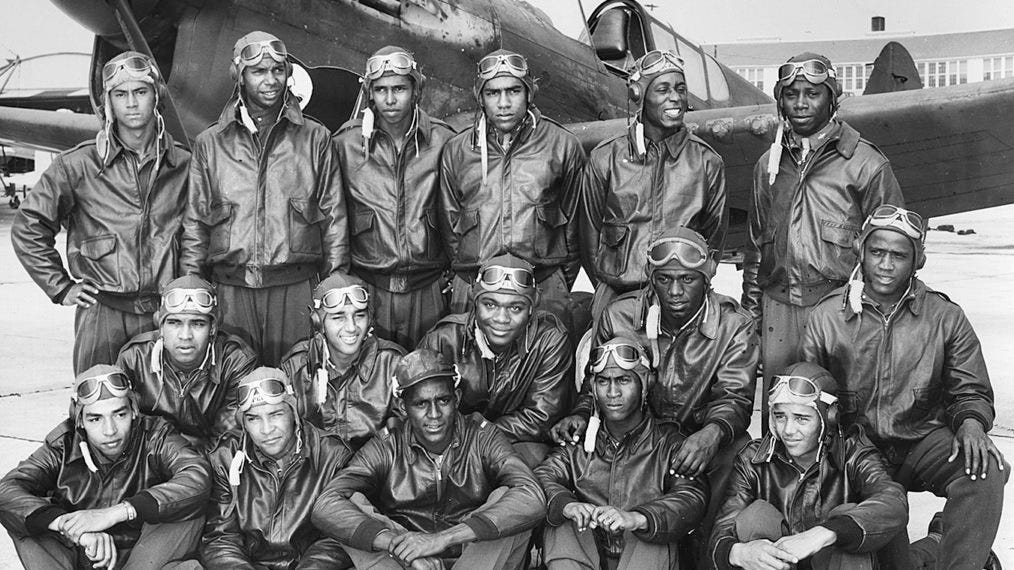
Suzanne Spellen is a gift to New York and Brooklyn - no, they’re not one and the same! And she’s a gift to the telling of history as a story.